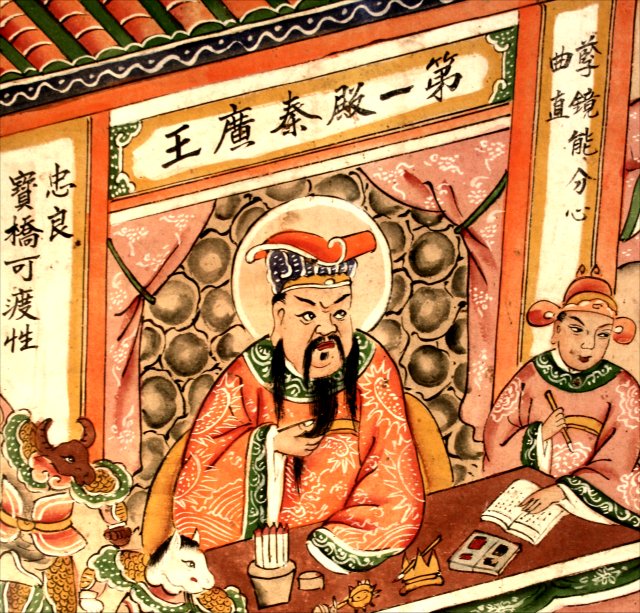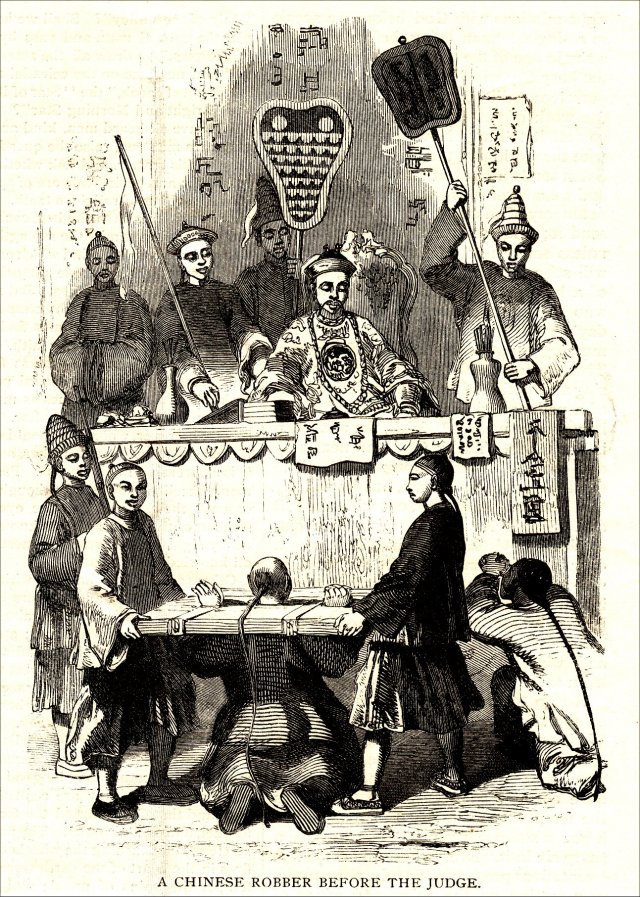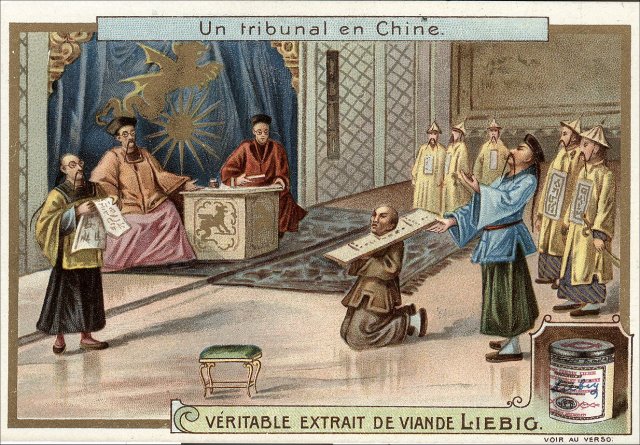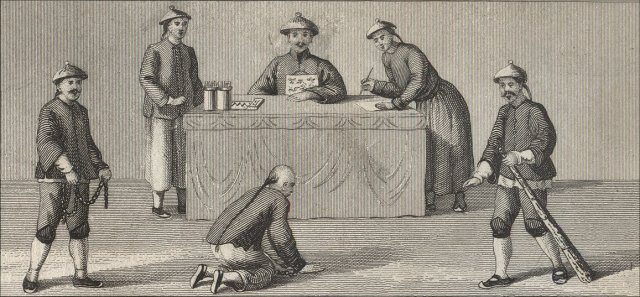
Translations
Magistrate title: First court - King Qin Guang
Couplets to either side of magistrate
The evil-revealing mirror can distinguish between crookedness and straightness in the mind.
The treasure bridge can transport one who is loyal and excellent in nature.
Each hell is overseen by a magistrate, their names and order generally consistent during the past millenium. Some of their names reflect older Indian traditions such as Yanluo or Yama of the fifth hell who was originally the First Ancestor dwelling in the abode of the dead and who gradually became regarded as a fearsome disseminator of justice in early India. Others are of Chinese origin such as the king of Tai Mountain who oversaw the seventh hell, Tai Mountain being located in Shandong Province and associated with the dead at least since the Han Dynasty. Stephen Teiser writes in the case of King Qin Guang, the overseer of this first hell:
"Ch'in Kuang wang [i.e. King Qin Guang] appears for the first time in Chinese history in "The Scripture of the Ten Kings." The most likely interpretation of his name is that, like the third king, the first character is a place name and the second character functions as a descriptive personal name. In this reading, Ch'in Kuang means "The Great [or Extensive] King of Ch'in," or "The King Who Extends Ch'in." Ch'in was the name of the Chinese state as early as the Western Chou dynasty (as well as the name adopted by that state when it established imperial rule in 221 B.C.E.) and the dynastic name chosen by a succession of non-Chinese rulers of northern China during the years 359-394, 384-417, and 385-431."

King Qin Guang as depicted at the Dazu Rock Carvings.


